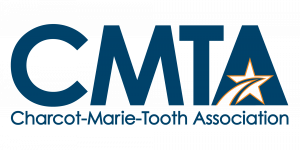CMTA presents findings at PNS 2025, revealing 135 CMT genes and 169 subtypes, highlighting the need for continued research to improve diagnosis and care.
The CMT community deserves both answers and solutions, and studies like this lay the foundation for both. They highlight the importance of continued genetic discovery.”
GLENOLDEN, PA, UNITED STATES, May 19, 2025 /EINPresswire.com/ -- The Charcot-Marie-Tooth Association (CMTA), the largest philanthropic funder of Charcot-Marie-Tooth (CMT) disease research, presented a comprehensive analysis of the genetic landscape of CMT at the 2025 Annual Meeting of the Peripheral Nerve Society (PNS).— Katherine Forsey, PhD, CMTA Chief Research Officer
The poster presentation, “The Genetic Landscape of Charcot-Marie-Tooth Disease,” first author Kenneth Raymond highlights findings from a systematic review of all published CMT disease genes. The analysis identified 135 published CMT disease genes associated with 169 distinct genetic subtypes. The analysis also detailed inheritance patterns across CMT, finding 88 autosomal dominant subtypes, 67 autosomal recessive subtypes, six X-linked recessive subtypes, three X-linked dominant subtypes, and one subtype involving mitochondrial DNA.
The study shows that how CMT is classified by genetics does not always match how it is classified clinically or by overall prevalence. For example, while CMT1A accounts for as many as 67.5% of all genetically confirmed cases, it represents just one genetic subtype within the clinical category of CMT1, which includes 11 different genetic subtypes. CMT1 refers to demyelinating forms of CMT, but many other demyelinating subtypes fall outside of CMT1. In total, 30 genetically characterized CMT subtypes are clinically described as demyelinating. This pattern was seen across all types of CMT, highlighting the need for continued research to better understand the genetic diversity of CMT and improve diagnosis.
“Our findings emphasize how far the field has come in understanding the genetic diversity of CMT, while also highlighting the urgent need for continued discovery. I am grateful to the work of Kenneth Raymond in conducting this important systematic review,” said Katherine Forsey, PhD, CMTA Chief Research Officer and presenting author. “The CMT community deserves both answers and solutions, and studies like this lay the foundation for both. They highlight the importance of continued genetic discovery and reflect CMTA’s longstanding commitment to this work.”
About CMT
Named after the three doctors who first described it in 1886: Charcot, Marie, and Tooth, CMT affects one in every 2,500 people. This rare disease has multiple subtypes, each with a lower prevalence. People with CMT experience progressive sensory loss, muscle weakness, and atrophy in the arms and legs, along with impaired balance, mobility, hand function, and more. There is currently no treatment or cure for this debilitating disease.
About CMTA
CMTA is a community-led, community-driven 501(c)(3) nonprofit organization with a mission to support the development of new treatments for CMT, to improve the quality of life for people with CMT, and, ultimately, to find a cure. As the leading global philanthropic funder of CMT research, CMTA unites the community with clinicians and industry experts to accelerate the advancement of treatments with investments of more than $30 million since 2008. For more information, visit cmtausa.org.
Kenny Raymond
Charcot-Marie-Tooth Association
+1 734-862-8702
email us here
Visit us on social media:
LinkedIn
Instagram
Facebook
YouTube
TikTok
X
Legal Disclaimer:
EIN Presswire provides this news content "as is" without warranty of any kind. We do not accept any responsibility or liability for the accuracy, content, images, videos, licenses, completeness, legality, or reliability of the information contained in this article. If you have any complaints or copyright issues related to this article, kindly contact the author above.


